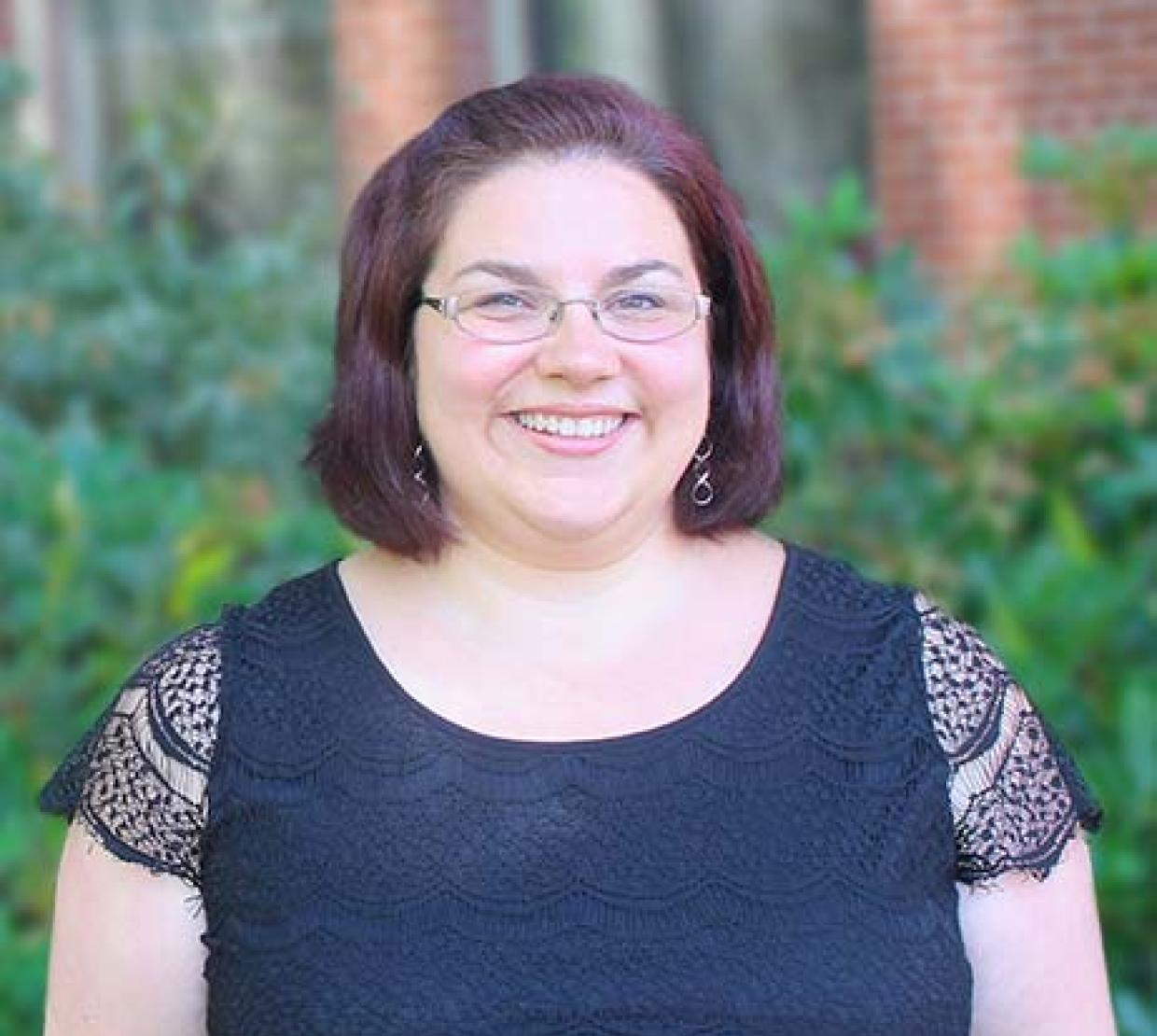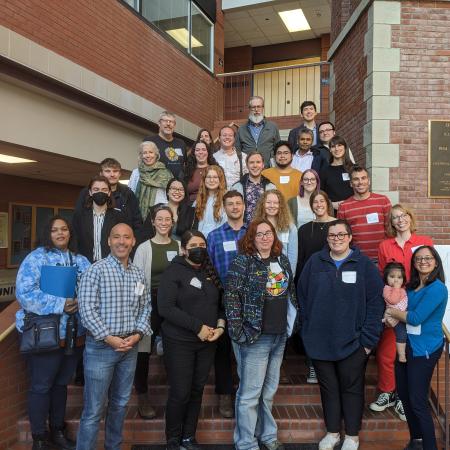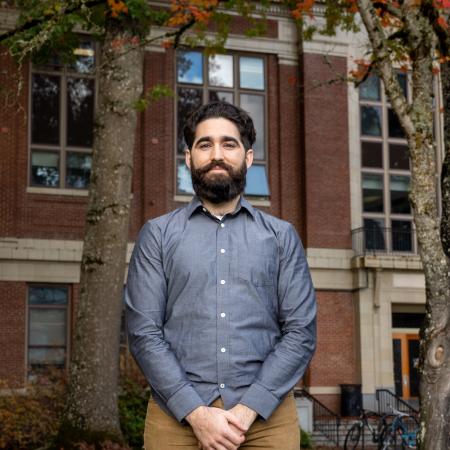Ten years after graduating from college with an undergraduate degree in math, Emerald Stacy was the owner of a bead-making business while also was running a coffee shop. She never imagined she would be pursuing a PhD in mathematics and researching number theory.
Her thunderbolt moment occurred while she was vacationing in Italy. While exploring the wonders of Italian Renaissance art in Florence, she was struck by a certain emptiness and boredom in her life. She wanted to do something more, something big, something more fulfilling.
Stacy recalled thinking, “I can do anything. I have a math degree!” She wanted to be driven by a passion and to be really good at something.
Math has always been part of Stacy’s life. She took her very first math class at the age of five at OSU and had her first math tutoring job at the age of 10. Her favorite book as a 13-year old was A Mathematician’s Apology, a 1940 essay by British mathematician G. H. Hardy. It explores the aesthetics of mathematics weaving in personal information, giving non-mathematicians insight into the mind of a working mathematician as well as the pleasure and power of mathematical invention.
After returning home to Olympia, Wash., she made up her mind to pursue a master’s degree in mathematics at Oregon State University. Stacy is no stranger to math, teaching and Corvallis: She was born in Corvallis and her father was an instructor in OSU’s Department of Mathematics as well as chair of the math department at Bellevue College in Washington state. Her father’s teaching philosophy guides her own teaching.
“My dad always said ‘Students learn math by doing it, not by watching others do it’ and ‘You can’t tell a student that something is hard or easy because it is not true for every student.’ I think about that all the time.”
Heading into the fourth year of her graduate program, Stacy has exceled as a graduate teaching assistant, helping hundreds of students tackle math at OSU.
Recently Stacy has been recognized for her teaching excellence: she has received OSU’s 2015 Herbert F. Frolander Award for Outstanding Graduate Teaching Assistant. The award recognizes OSU graduate teaching assistants with outstanding teaching and professional involvement with both faculty and students. The awardee is honored at University Day in September with a plaque and also receives $1,000 in funding.
“Life is riddled with unexpected obstacles,” asserts Stacy. “What is most important is what you do afterward. I teach my students that they can pull their socks up after a rough midterm, face the material they didn’t understand and rise to meet the next challenge.”
“For me this award is an indicator that after spending my twenties trying to pull my socks up, I was able to meet graduate school head on,” said Stacy.
Stacy is committed to helping female students succeed and shrinking the gender gap in math. Her mentor is Associate Math Professor Holly Swisher, from whom she has drawn tremendous inspiration.
“She is so vivacious and relatable,” said Stacy. “Holly is a great teacher and role model for female mathematicians.”
Swisher has high praises for the aspiring mathematician: “Emerald is a passionate graduate student with a tenacious and lively approach to mathematics. She applies her positive attitude and sense of humor to her teaching, her studies, and to any challenge she encounters. She’s an inspiration to her students!”
Female mathematicians are a rare breed.
“Despite significant improvements over the last few generations, the discipline of mathematics still counts a disproportionately small number of women among its practitioners, which cause us (on average) to perceive and treat women and men differently and unfairly,” writes Greg Martin, Professor of Mathematics at the University of British Columbia in a recent paper.
Martin asserts that these mutually reinforcing biases begin in elementary school, remain through university study and continue to challenge women’s careers in terms of hiring, evaluation, awards and inclusion in journal editorial boards and conference committees. He favors discussing in detail the biases against women in mathematics in order to create greater awareness in hopes of mitigating them.
“I think there is an underestimation of women in math,” suggests Stacy. “Fortunately I only experienced one instance where I felt discounted in the field of mathematics. But it was addressed and resolved.”
Stacy was encouraged by the 50% of women in her cohort at OSU. In 2014, the Association for Women in Mathematics reported that 43% of undergraduate math majors are women and 28% of new math PhDs are women. Only 12% of tenured math faculty at PhD-granting universities are women.
Stacy noticed an interesting trend within her cohort after passing her qualifying exams recently: although 50% of her cohort are women, just half of those who registered for the exams actually showed up to take them. In contrast, all of the men in her cohort showed up for the exams. In fall 2013, just one of eight people who passed qualifying exams in the Mathematics department was female. In 2014, the exam was split into two parts and although 12 parts were passed, just two parts were passed by women.
Stacy is still reflecting on what factors might have influenced her female colleagues intent on taking the qualifying exams change course. Since beginning her graduate program in math 2012, Stacy has remained undaunted, finding power in her own mathematical journey.




